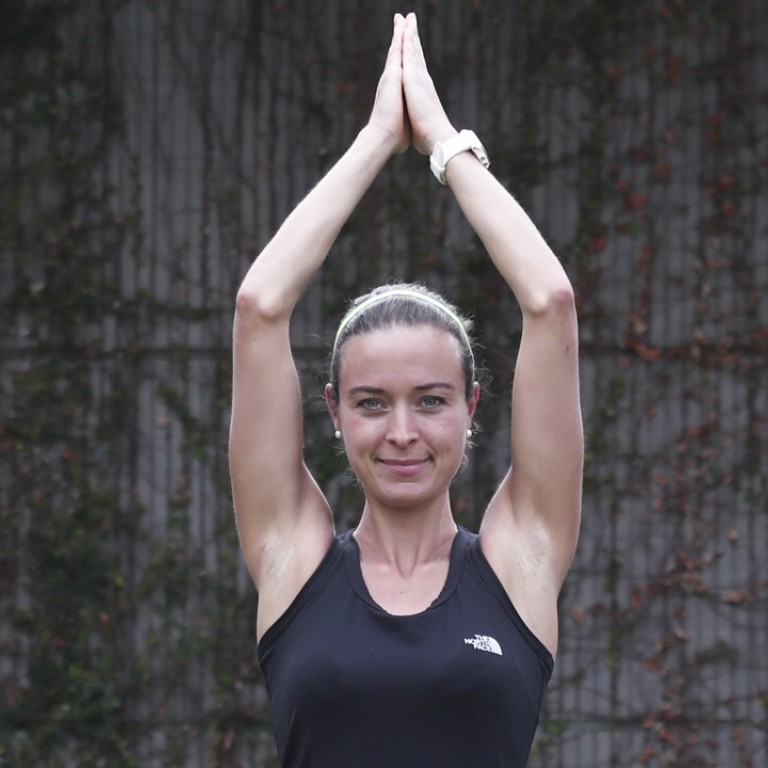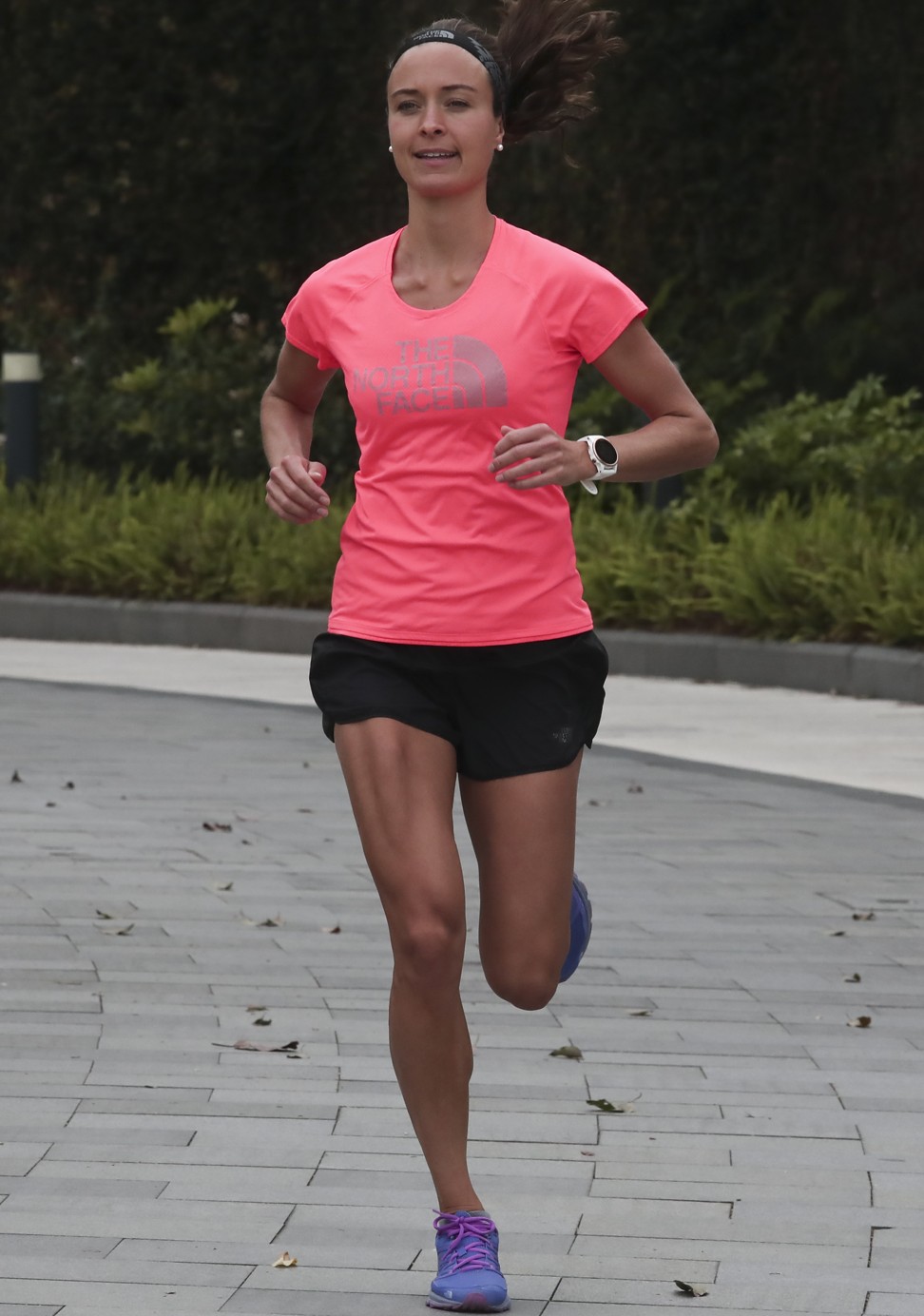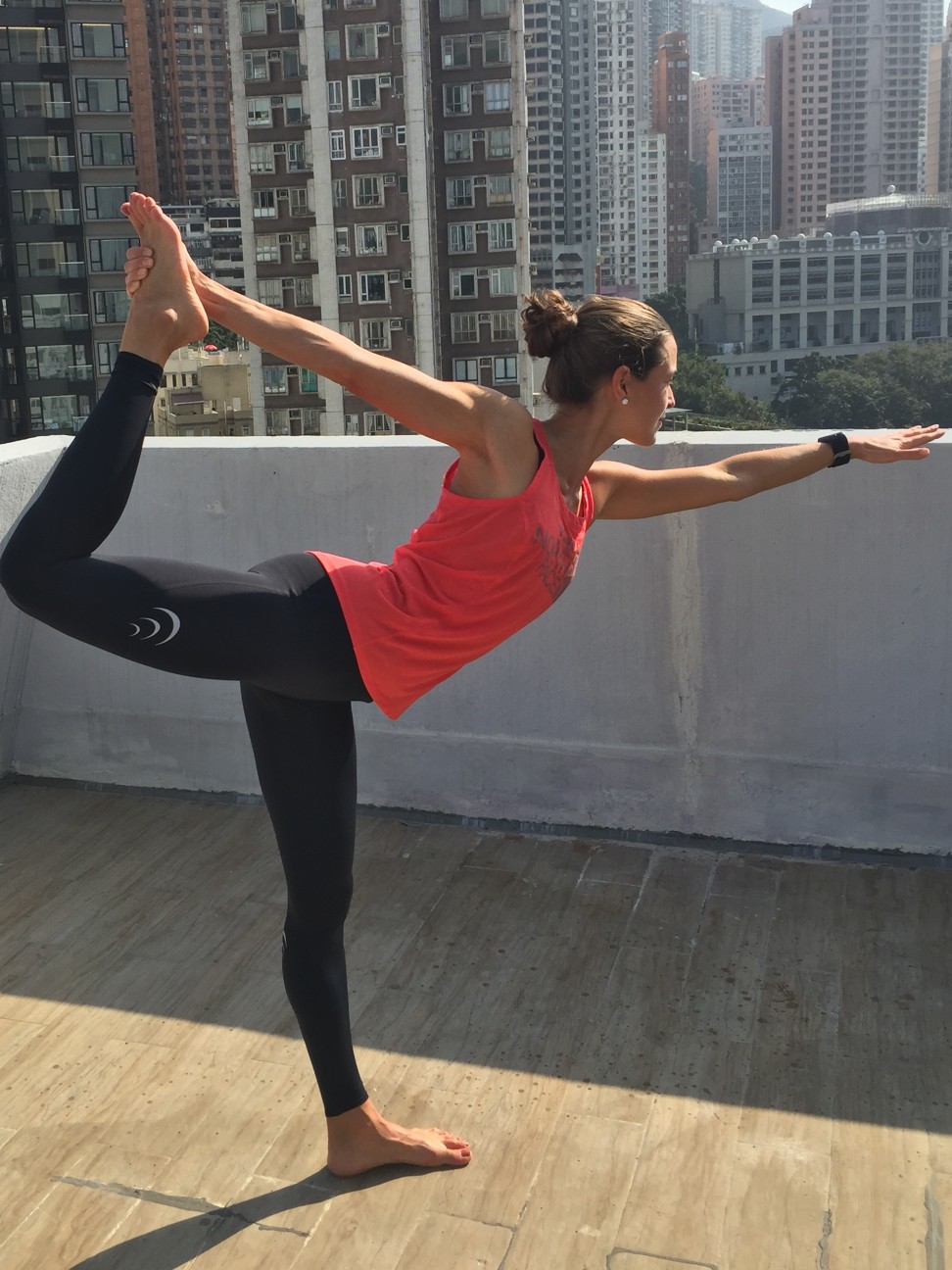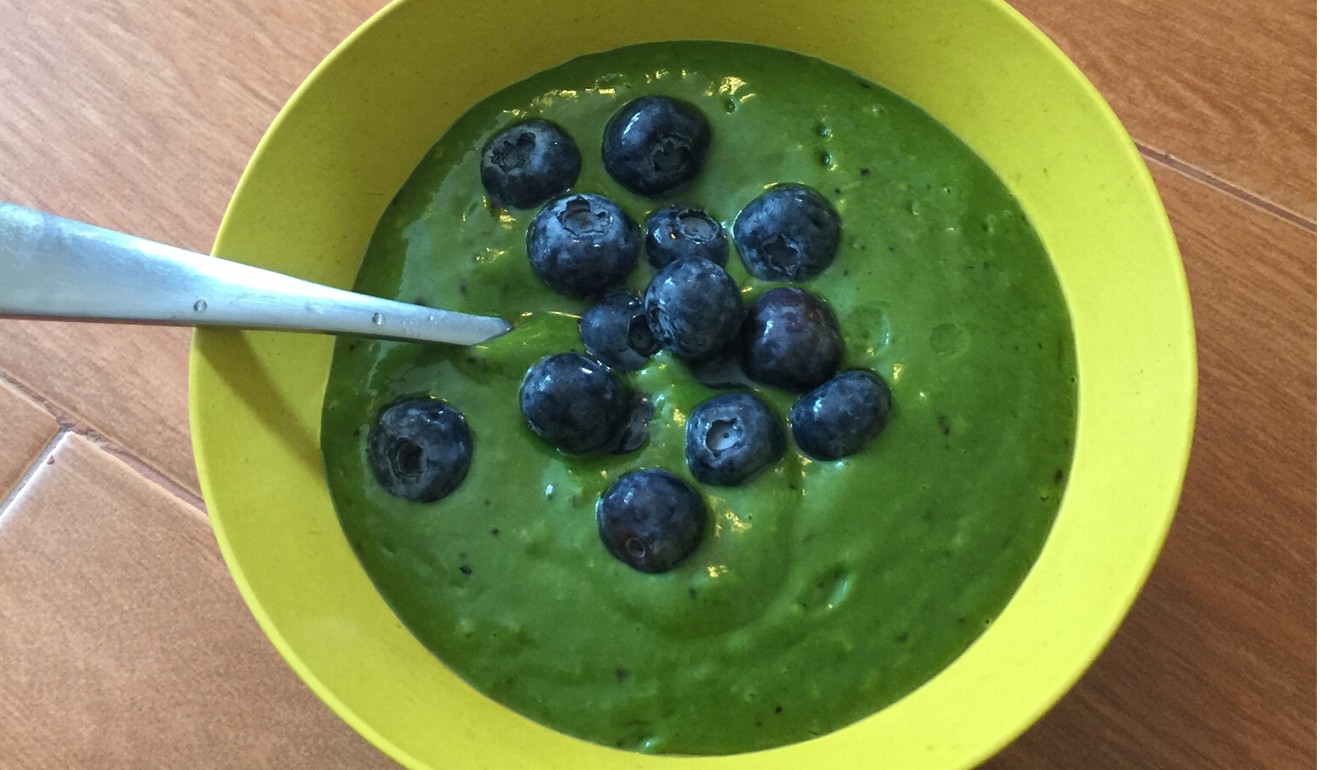
How yoga, trail running and a vegan diet changed Hongkonger’s life – and cured her underactive thyroid
After moving to Hong Kong five years ago, Silke Bender from Germany gave up her job as a management consultant to focus on improving her health
In 2015, Silke Bender gave up her job as a management consultant to fulfil a lifelong dream to pursue sport, nutrition and health.
She became a yogi specialising in teaching yoga to athletes and runners, a side business she had been nurturing for some time. The German native incorporated her passion for trail running by organising yoga-plus-running camps.
Meet the Hong Kong vegan fitness trainers who can help you transition to a plant-based life
Bender also became a professional runner, and a regular top finisher at races in the region. At The Northface 100 50km race in Thailand in 2016, she met her goal of blowing through 50km under six hours, having crossed the finish line as the second-placed female.
Other accolades include winning the 12km Hysan Trail Run in Hong Kong last year, and the 9km CSfit Bonaqua Action Sprint Repulse Bay, also in Hong Kong.
If you can’t eat it, don’t put it on your skin
Another memorable race was the 2017 Yading Vertical Kilometre in Sichuan, China, a high-altitude race that takes runners from 3,800 metres to 5,000 metres amid glacial lakes and snow-capped ranges, where she placed second in the women’s field for the 7km event.
For ethical reasons, Bender also converted to veganism in 2015. As her exploration into plant-based foods progressed, she learned of the work of Michael Greger, an advocate of a plant-based, whole food diet and author of How Not to Die, who espouses lifestyle changes to combat common ailments.

Today, the 33-year-old is anything but lethargic; she beams when talking about sport, health and nutrition. After embracing a plant-based diet, she stopped the thyroid medicine she had taken for 12 years, and her thyroid levels normalised within three months, confounding her thyroid doctor, who said: “Miracles do happen.”
She also avoids potentially harmful skin products or cosmetics, opting for olive oil or coconut oil as moisturisers, for example. “If you can’t eat it, don’t put it on your skin” is her philosophy.
“I really think exercise, and especially nutrition, can be kind of your medicine, to prevent, even reverse disease,” she says.
How vegan diet went from fringe to mainstream, and its advocates in Hong Kong and worldwide
Describe your typical meals.
A typical day would start with a big smoothie that includes a banana, one whole avocado, pineapple, mango, some spinach, and some chia seeds. It’s high in calories but healthy calories … when you have very healthy quality calories, you don’t really gain much weight. That’s at least the case for me. Sometimes I put whatever else I have at home on the smoothie bowl such as dates or leftover fruits, and add some chopped fruit on top of the smoothie to chew on something, so it feels like a real meal, instead of drinking a smoothie.
Lunch would be a big salad, with kale or spinach, as dark greens are healthy and nutrition-rich. I would add raw mushrooms, tomatoes, and onions. If I want to make it heavier, I add corn chips and nutritional yeast flakes, to give it a cheesy, nutty taste. I add nuts [and seeds], too, like pumpkin seeds.

Do you take any medication for your thyroid condition now? What happened?
I still take nothing and [my thyroid levels have] normalised. It’s hard to say if this change was because of diet alone or other things.
Some say physical and mental stresses cause the same reaction in the body. I changed my life and I’m happy in what I’m doing [so I don’t have a lot of those stresses I had before]. It all probably played a role together.
I really think exercise, and especially nutrition, can be kind of your medicine, to prevent, even reverse disease
What does yoga for runners entail?
I’m a Hatha-certified yoga teacher, which involves deep stretches, holding postures and going for the right alignment. For runners or athletes, I focus on areas that typically get tight in runners, like hip openers – as runners usually get tight hips.
I also focus on stretches for the back and the IT [iliotibial] band – the connection between the hip and knee. I’d also do balance postures, such as single-legged postures as running, at the end of the day, is a single-legged sport…to help, for example, both your feet to work [in unison] and both sides of your body work the same.
What’s your workout routine?
Due to an ankle injury last year at a trail race, I’m focused on cross-training and not running as much. I had to do a lot of strength and balance work to get back my mobility. I have started running again.
To get strong and my cardio system strong, I cycle every other day. I also swim … which helps with injury recovery. If I didn’t have an injury, I’d do two cardio workouts daily.
I also do triathlons, so to prepare, I run, swim and cycle and try to do two sessions daily. They don’t have to be too long, like 20 minutes of swimming plus an hour of cycling. I also run, and do strength training and yoga.
‘Pain is a guarantee’ but vegan runner shows anyone can do the amazing on 298km non-stop marathon
Before you moved to Hong Kong five years ago were you always a trail and ultrarunner?
No. I was a 10km road or park runner, and I did it for exercise and general health reasons. I wouldn’t say ultra-distance running done too long … I wouldn’t say it’s too healthy. But I still do it because I love it.
A friend in Hong Kong suggested I try trail running and took me on a trail, then later suggested we should do 50km trail. I had never done that before, so I thought: how can I do a 50km?
We did a 50km hike/run, then eventually 20km, then a 25km trail. At one point we signed up for the Moontrekker event in 2014, which was around 43km. To prepare for that, we went on trails all the time and enjoyed it.
What are the common running issues and how can yoga help?
The most common is knee pain, plantar fasciitis and Achilles tendon problems, so they want information on yoga beneficial to those issues. I show certain postures they can do at home regularly. On running, we go through trail-running techniques and work on your “trail eye”.

What’s a “trail eye?”
Let’s say you want to get through the trail injury-free and fast as possible. At the running camps, we go to a certain trail, decide which paths to take – the stairs, a side [path] or another side [path] featuring less or more rocks.
Everyone tries those paths and discusses which felt best to avoid falling, or helped maintain your strength and endurance for rest of the race. We also try to find the smoothest path for people to run and stay injury-free and more … and also do yoga and strength exercises to prevent or reverse typical running injuries.

A champion’s breakfast
Professional runner and yoga instructor Bender starts her morning off with an energy-boosting green smoothie bowl, and shares her recipe here.
1 ripe banana
1/2 avocado
1/2 mango
5 chunks pineapple
handful of spinach
1 Medjool date
1 tbsp chia seeds
1 tbsp coconut oil
Mix everything in a blender, pour into a bowl and top with a handful of blueberries.

